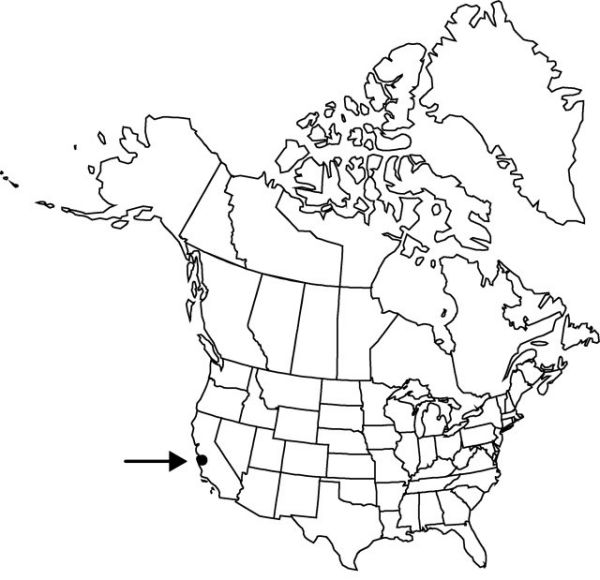Difference between revisions of "Piperia yadonii"
Lindleyana 5: 209, figs. 1A–G, 2. 1990.
FNA>Volume Importer |
imported>Volume Importer |
||
| (6 intermediate revisions by 2 users not shown) | |||
| Line 6: | Line 6: | ||
|place=5: 209, figs. 1A–G, 2. 1990 | |place=5: 209, figs. 1A–G, 2. 1990 | ||
|year=1990 | |year=1990 | ||
| + | }} | ||
| + | |special_status={{Treatment/ID/Special_status | ||
| + | |code=E | ||
| + | |label=Endemic | ||
| + | }}{{Treatment/ID/Special_status | ||
| + | |code=C | ||
| + | |label=Conservation concern | ||
}} | }} | ||
|basionyms= | |basionyms= | ||
| Line 24: | Line 31: | ||
|distribution=Calif. | |distribution=Calif. | ||
|discussion=<p>Of conservation concern.</p><!-- | |discussion=<p>Of conservation concern.</p><!-- | ||
| − | --><p>Piperia yadonii, a narrow endemic (Monterey Bay area), bears a superficial resemblance to P. elegans. Much of the P. yadonii habitat has been preempted for residential and golf course development.</p> | + | --><p><i>Piperia yadonii</i>, a narrow endemic (Monterey Bay area), bears a superficial resemblance to <i>P. elegans</i>. Much of the <i>P. yadonii</i> habitat has been preempted for residential and golf course development.</p> |
|tables= | |tables= | ||
|references= | |references= | ||
| Line 33: | Line 40: | ||
-->{{#Taxon: | -->{{#Taxon: | ||
name=Piperia yadonii | name=Piperia yadonii | ||
| − | |||
|authority=Rand. Morgan & Ackerman | |authority=Rand. Morgan & Ackerman | ||
|rank=species | |rank=species | ||
| Line 47: | Line 53: | ||
|publication title=Lindleyana | |publication title=Lindleyana | ||
|publication year=1990 | |publication year=1990 | ||
| − | |special status= | + | |special status=Endemic;Conservation concern |
| − | |source xml=https:// | + | |source xml=https://bitbucket.org/aafc-mbb/fna-data-curation/src/2e0870ddd59836b60bcf96646a41e87ea5a5943a/coarse_grained_fna_xml/V26/V26_1172.xml |
|subfamily=Orchidaceae subfam. Orchidoideae | |subfamily=Orchidaceae subfam. Orchidoideae | ||
|tribe=Orchidaceae tribe Orchideae | |tribe=Orchidaceae tribe Orchideae | ||
Latest revision as of 21:12, 5 November 2020
Plants 10–50(–80) cm. Stems attenuate toward tuberoid, 0.5–3.5 mm diam.; bracts (4–)7–20(–26). Leaves prostrate; blade 11–17 × 2.2–3.9 cm. Inflorescences densely flowered, cylindric, (2–)5–15(–30) cm; rachis shorter than peduncle; bracts (3–)5–8(–11) mm. Flowers green and white, fragrance faint, harsh to honeylike, diurnal; sepals 3–5.5 × 1–2.5 mm; dorsal sepal green with white margins, elliptic-lanceolate; lateral sepals spreading to recurved, white, lanceolate; petals erect-recurved, green with broad outer, narrow inner white borders, lanceolate, falcate, 3–5 × 1.5 mm, inner margins often forming U, apices often connivent; lip recurved, triangular-lanceolate, 2.5–5 × 1.2–2.5 mm; spur deflexed, 2–5 mm; viscidia ovate to broadly elliptic, 0.4–0.5 × 0.3–0.4 mm; rostellum blunt. Capsules 5–9 mm. Seeds cinnamon brown.
Phenology: Flowering late May–early Aug.
Habitat: Monterey pine forest, maritime chaparral
Elevation: 0–150 m
Discussion
Of conservation concern.
Piperia yadonii, a narrow endemic (Monterey Bay area), bears a superficial resemblance to P. elegans. Much of the P. yadonii habitat has been preempted for residential and golf course development.
Selected References
None.
